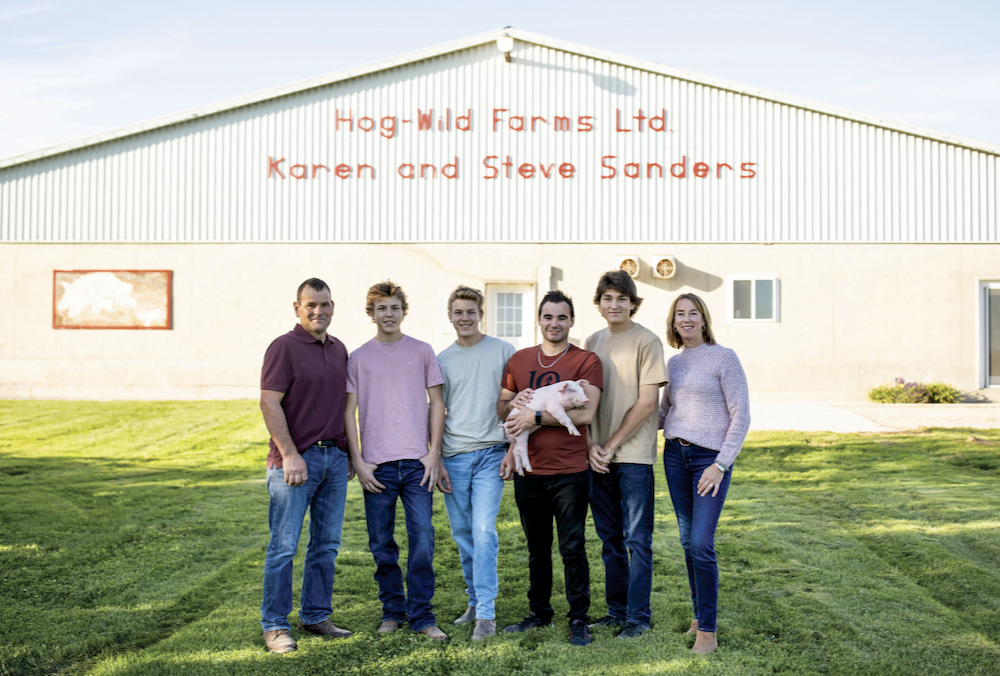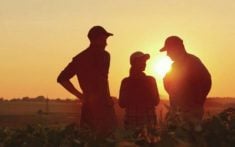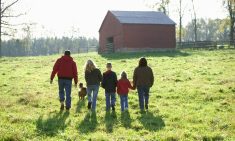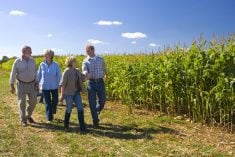Following along with our series, The Succession Advantage, we have covered the first two critical stages for family farm transition planning. The Communication Advantage comes from respectful conversation and results in aligned vision and agreed upon goals for the farm’s future. Financial Advantages become more tangible when starting succession planning early and include tax savings, peace of mind, and financial security for the family and the farm. Next in this series, we look to the business planning side, where families explore how to leverage their own unique abilities.
The changes are slow coming because these are very big topics,” says Karen Sanders, matriarch of the family and co-owner of Hog Wild Farms, a farrow-to-finish hog operation in Western Ontario.
“These are important, big topics, and change takes time. But having everyone being able to speak their mind was eye-opening.”
Read Also

What to consider when setting up farm-related business ventures
Things to consider before launching a farm-adjacent side business.
We caught up with Karen to speak with her about recent strategic planning work her family had invested in to get ahead of the succession planning process. “Even for (my husband) Steve and I, we had to sit down and really think about our farm goals and what we want the future to look like,” Karen told us. “It was impactful in a great way.”
Strategic business planning for their farm operation provided the Sanders family with insights about their children they weren’t yet aware of — multiple family members want to be involved in the farm’s future. They have four sons: Dylan, Jack and twins Bryce and Luke — ranging in ages from late teens to early twenties. For the Sanders family (who, like many farmers today, are facing labour shortages and working round the clock), they recently had an opportunity to expand their operation, effectively doubling its size, and that kick-started conversations between husband and wife about the long-term vision for their farm. They quickly realized this discussion had never happened amongst all family members.
“We don’t stop and plan enough,” Karen says. “I think everyone gets too caught up in the day-to-day jobs, especially now because we are short-staffed. But first and foremost, we are a family. Secondly, a business family. We want to be sure our kids are involved with our plans and decision-making so we can continue to be a family that enjoys each other’s company for generations to come.
“Whether they choose to farm or not, we want to be sure they are all heard.”
Strategic business planning doesn’t have to be a complicated process. It can be as simple as understanding how to better utilize the resources the farm has available, or identifying milestones such as transferring knowledge from one generation to the next. And the benefits are clear; it allows families to better shape the direction of the business, allocate resources most efficiently, and leverage one another’s unique abilities to best position the farm for continued success.
For the Sanders family, it provided the brothers with the opportunity to align their long-term individual goals and recognize the shared desire, and opportunity, for multiple siblings to be involved.
“Hearing everyone else’s goals, on whether they wanted to stay in the business or not, gave us all a quick sense of where everyone is going,” says eldest son Dylan. He confides he had previously been concerned about how to balance his dream career as a paramedic with his passion for, and commitment to, the family farm.
“For me personally, knowing I want to stay in the business and knowing that some of my brothers are also interested, and some of the goals they have, it’s nice to know that I’m not going in alone and we can rely on and support one another,” he shares.
There are some practical tools family farms can use to develop their own strategic planning session including:
- A communication exercise to determine what good communication looks like and best practices for business meetings.
- Sharing individual visions of success and goals for each member’s future, including whether they would like to be involved in the farm’s future.
- Summarizing areas where the vision is aligned and where the gaps remain.
- Sharing accomplishments, both personal and professional, with each other. This is usually where family values or business values can be discovered.
- Personality assessments to better understand individual strengths and how to leverage and unlock their potential.
- A formalized business assessment, inviting all generations to participate. This can be as simple as using the SWOT method (Strengths, Weaknesses, Opportunities, Threats).
The above allows the family to co-create the next phase of the plan and determine where to focus their time with a professional team to guide them towards a strategy to accomplish their co-created goals. For the Sanders family, their strategic business planning has allowed them to make key decisions about the expansion of their operation and begin, at an early stage, to best position their children for the farm’s continuity.
“It definitely put it into perspective how much my brothers and I have to learn,” Dylan says. “There’s still so much that we don’t know, and it is going to take time, but my parents are teaching us more now, knowing we are interested in running the farm.”















